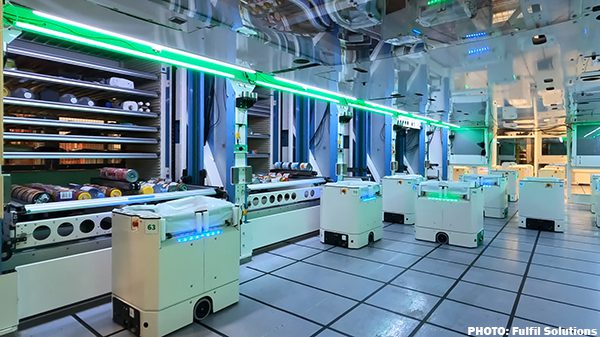There have been two constants since the dawn of automation: advocates of developing technologies optimistically forecasting that machines will replace human labor, and people within the trade who steadfastly insist it could never happen—at least not broadly.
As we continue the third decade of the 21st century, it appears the truth lies somewhere in the middle as a new wave of robotics technology has come from the lab to the field, aiming to streamline the perishables pipeline.
The produce industry, long centered on human labor, has seen a marked increase in the use of robotics since the introduction of flex-picker robots in 1998. Industry executives have noted a 25-percent boost in productivity since 2017 in areas where robots performed work previously done by humans.
Robots used to harvest, pack, ship, and even help sell fresh fruits and vegetables are no longer the stuff of science fiction. We spoke to four experts in the robotics field about how their work is changing things at every point in the produce supply chain—and how those changes might be altering the way the entire industry functions.
The retail market—whether in foodservice, grocery, or direct-to-consumer sales and delivery—is where the rubber meets the road when it comes to how robots impact the supply chain.
Solving the so-called “last-mile problem,” or reducing the costs and resources involved in delivering product from its final point of distribution to the consumer, has been the focus for thousands of companies.
And while we aren’t quite to the point where drones and other mobile robots bring consumers their fresh produce, the giants of the industry are hoping it is literally just around the corner.
Many of these developments have been widely reported, like Kroger Company’s fulfillment facility in Wisconsin that leverages new developments in robotics to deliver produce direct to consumers. Drone delivery programs are also being tested by companies like Walmart and Amazon.
Grocery chains, including Vallarta Supermarkets, Giant Eagle, Schnucks, and Stop & Shop have in-store robots to keep shelves stocked, while a retirement community in Illinois uses robots to deliver meals to residents in its dining room.
Last year, Grubhub partnered with tech startup Cartken for autonomous food deliveries to college students. North of the border, Compass Group Canada and SJW Robotics teamed up last summer to install fully automated cloud-kitchen facilities in institutional settings such as airports, healthcare facilities, and other locations where fresh food is not normally available.
“We looked at traditional foodservice models and saw a real need for 24/7 meal availability,” Compass’ chief innovation officer said in a press release. “People never used to think about grabbing a hot, fresh, customized meal at 3 a.m., because it was simply not available. Now it’s possible, with this cutting-edge technology that solves for these complexities.”
No one wants to be left behind, and in the last year and a half, 47 percent of retailers said they would begin the use of in-store robotics. Our panel of experts agrees that retail is simply the last link in the chain that will benefit from the further development and use of robotics.
Florian Richter, founder and CEO of Muddy Machines, based in London, England, explains it all rather succinctly: “Growers survive because robotics remove the labor bottleneck. Packers will do more business because production can be increased. Shippers and distributors can reduce shipping distances—and retailers can offer more locally grown and fresh produce in season.”
This is an excerpt from the Applied Technology department in the March/April 2023 issue of Produce Blueprints Magazine. Click here to read the whole issue.



